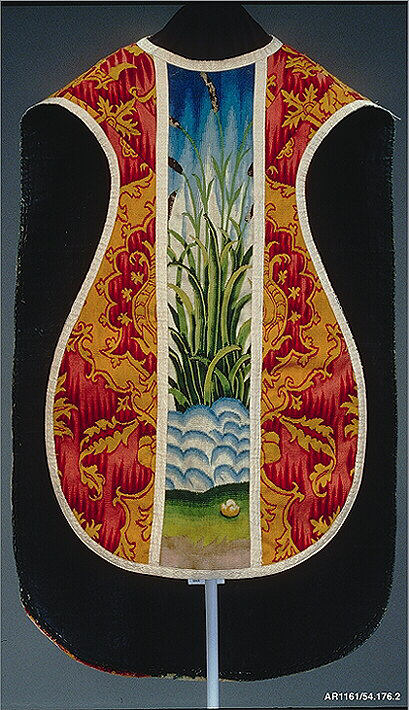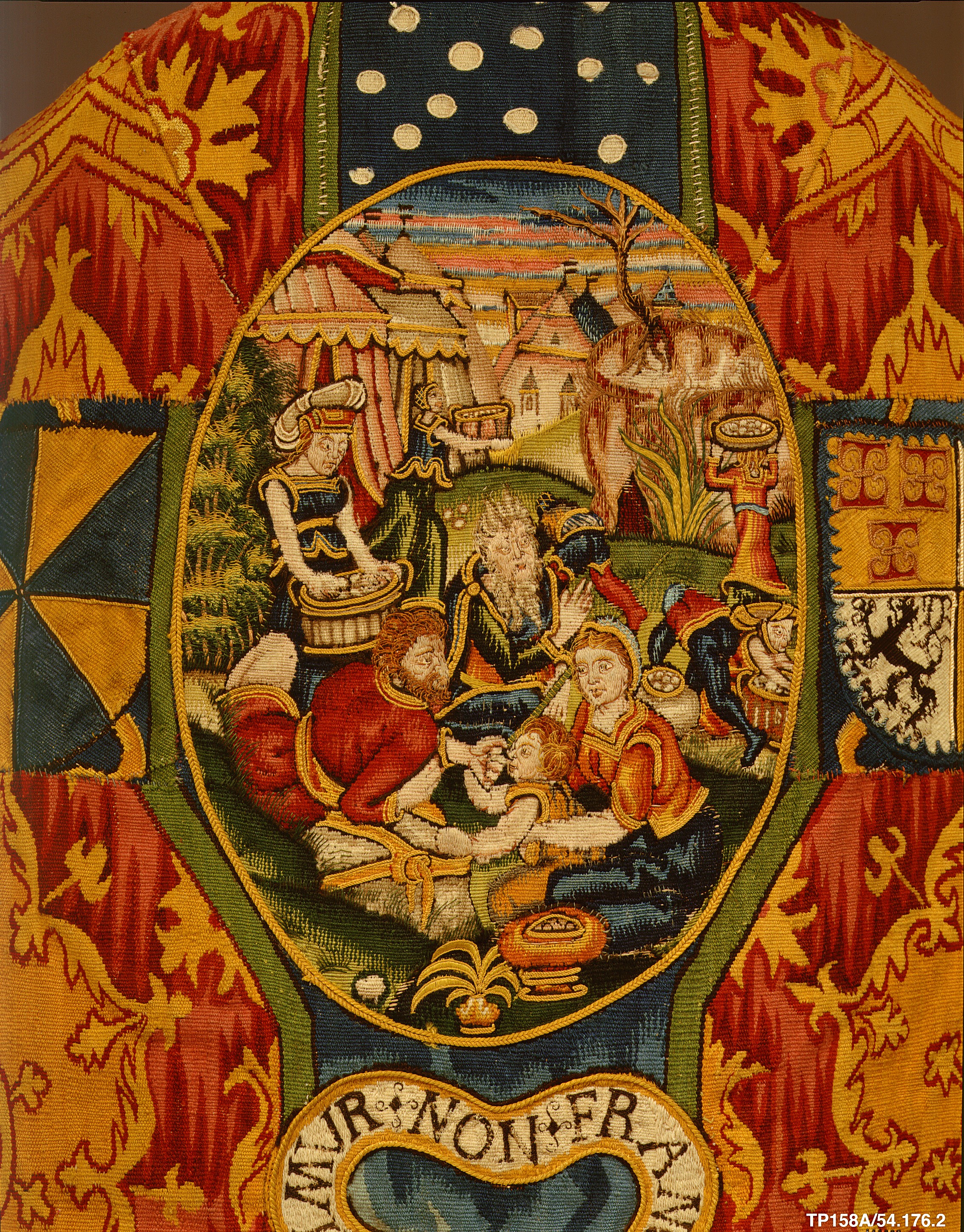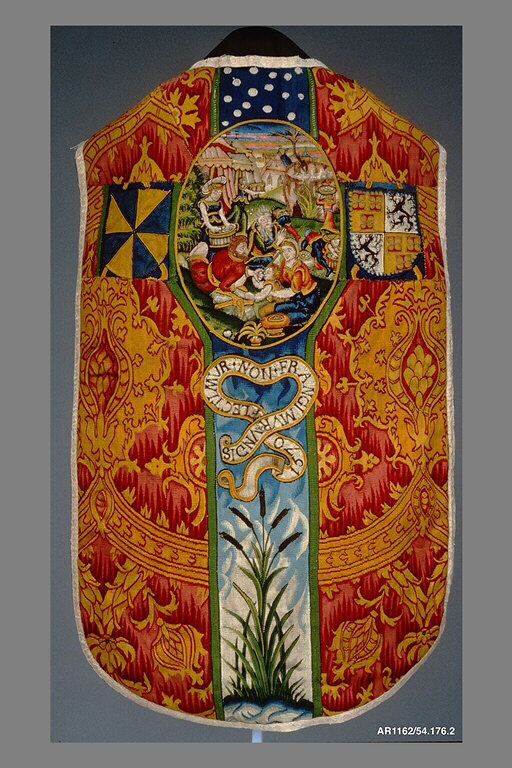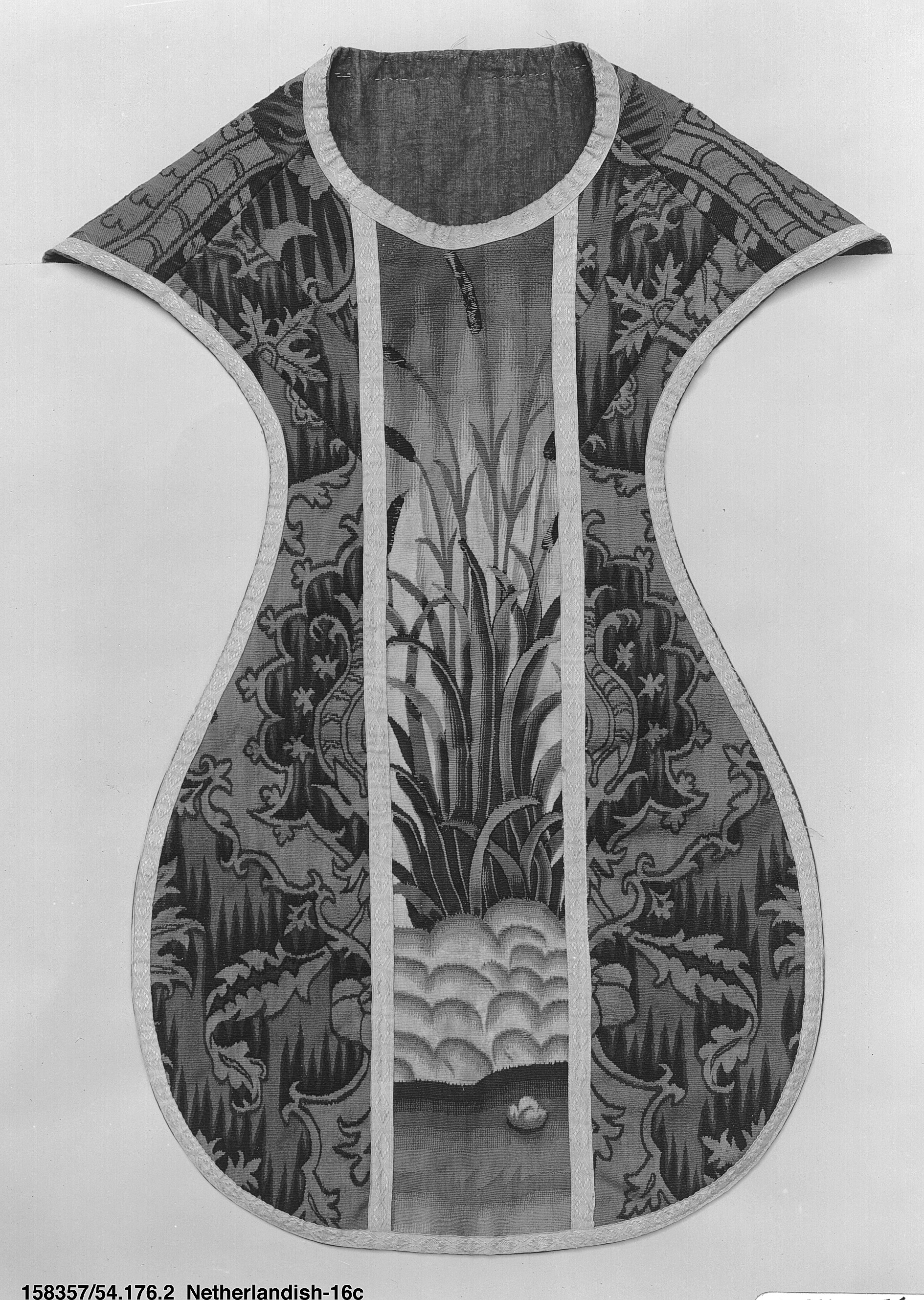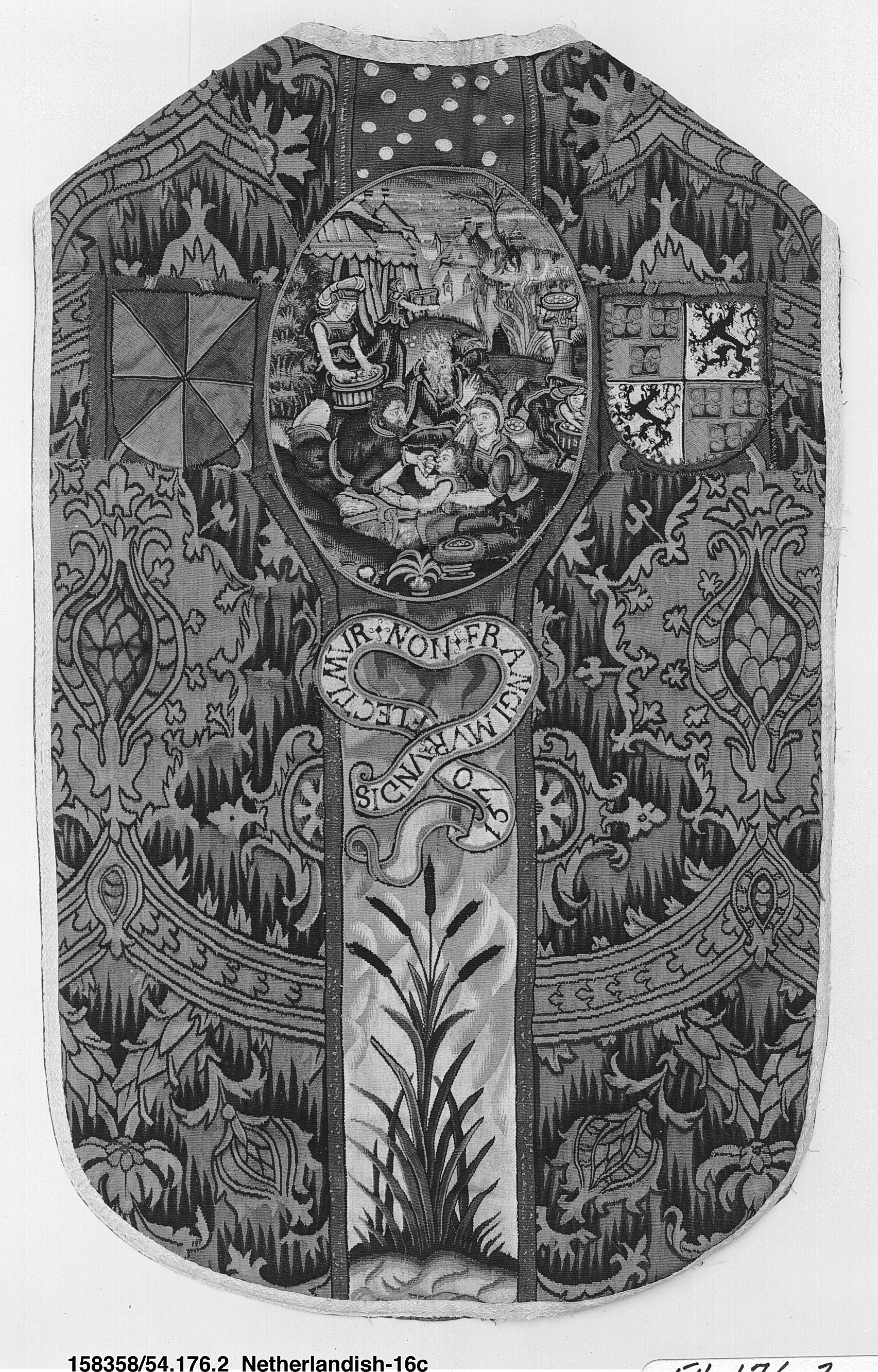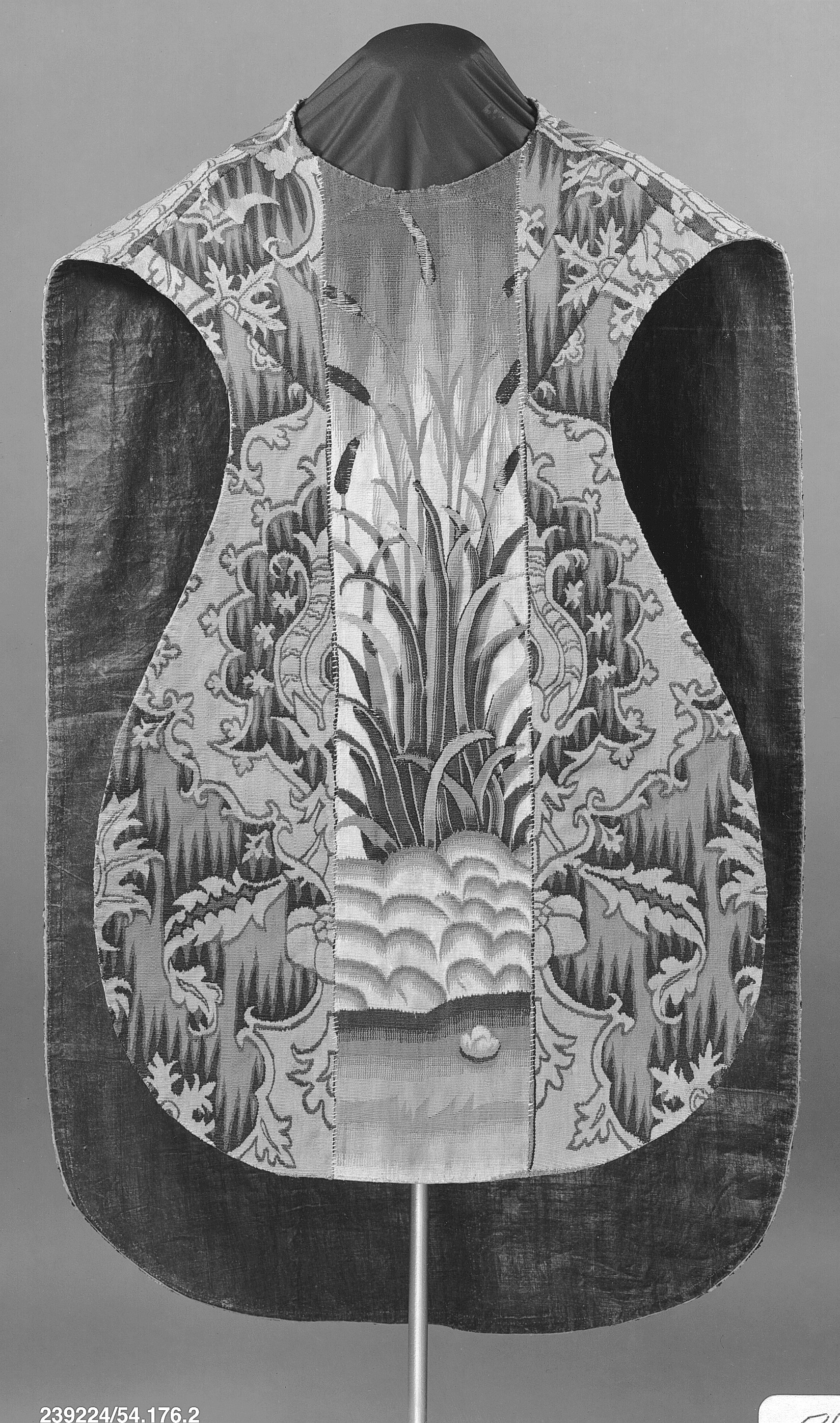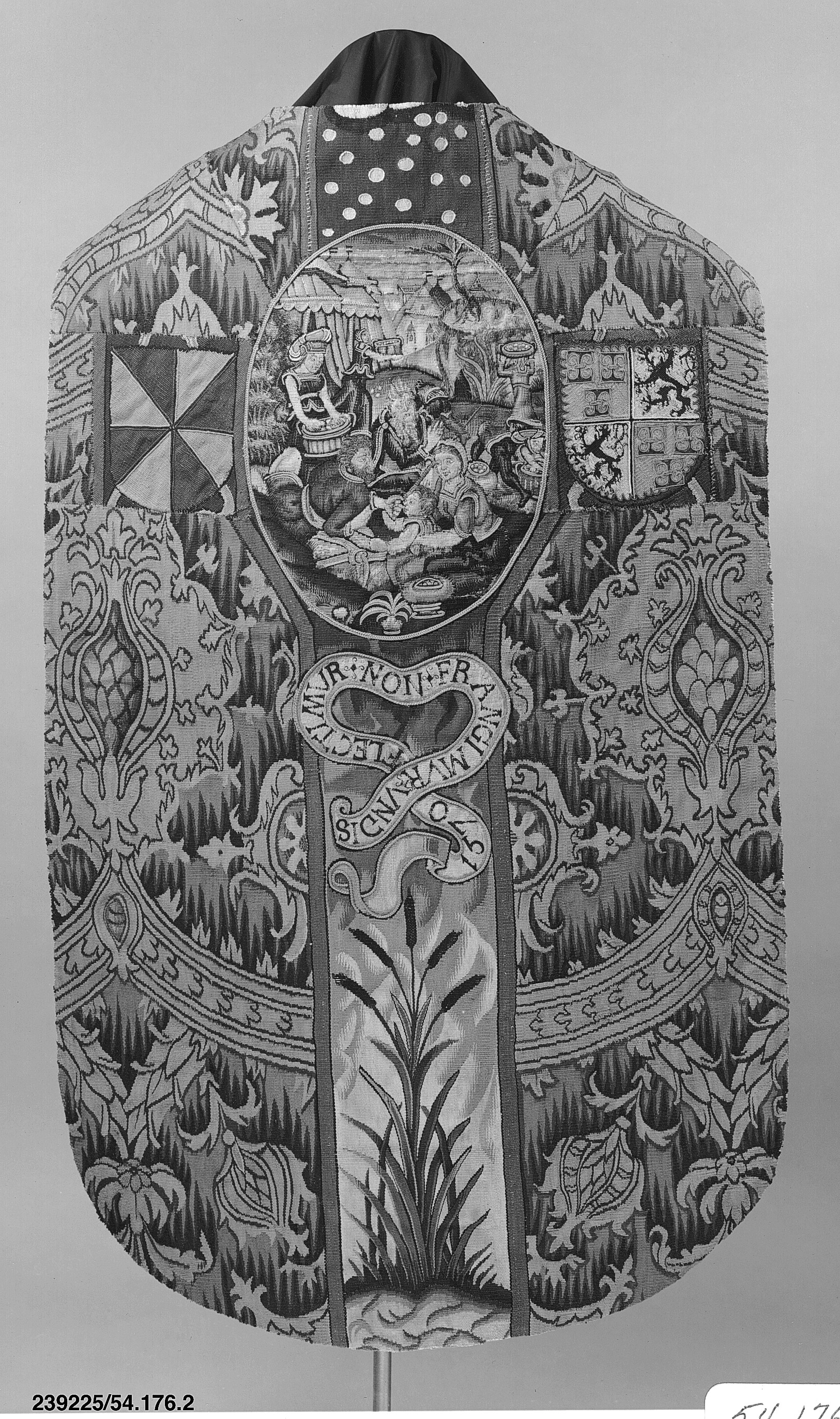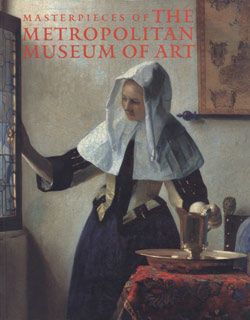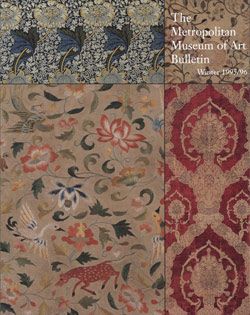Chasuble with the Gathering of the Manna
After a print by Hieronymus (Jerome) Wierix Netherlandish
Not on view
In this very rare example of a tapestry-woven ecclesiastical vestment, the more expected materials and techniques are imitated in trompe l'oeil: the main fabric simulating a pomegranate velvet and the pictorial scene, embroidery. The chasuble is part of a set that also includes two dalmatics (one in The Metropolitan Museum of Art and the other in the Los Angeles County Museum of Art). All three vestments bear the coats-of-arms of the De Vissher-van der Gheer and Van Culemborch families. The probable owner, Johannes De Vissher van der Gheer (ca.1527–1591), was canon of the Chapter Church of Saint Barbara at Culemborg and later vicar of the Chapter Church of Saint John at Utrecht. His motto, "We are bent, not broken, by the waves," describes not only the bulrushes depicted below, but also perhaps the effects on the wearer of the tumultuous political and religious climate of the Netherlands in 1570. The depiction of the Israelites gathering the manna that sustained them in the desert prefigures the eucharistic host. This reference would be clearly apparent at the moment of the Consecration, when the priest, who at that time celebrated the Mass facing the altar with his back to the worshipers, raised the host on high.
[Alice Zrebiec, 1996]
This image cannot be enlarged, viewed at full screen, or downloaded.
This artwork is meant to be viewed from right to left. Scroll left to view more.


